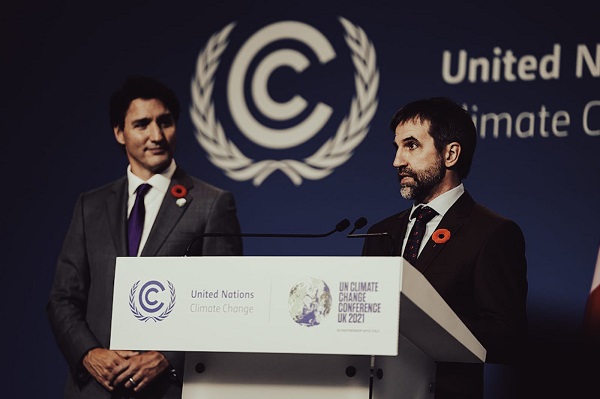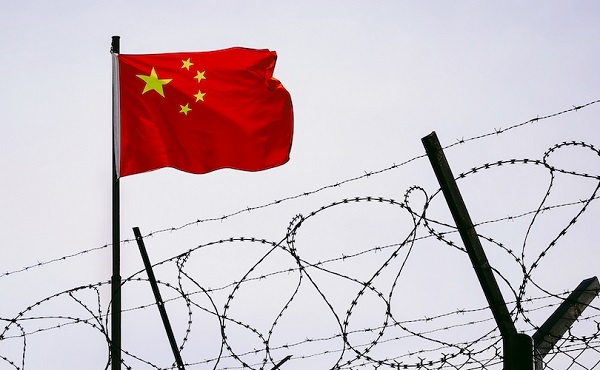Opinion
PBO Report Reveals Trudeau’s Carbon Tax Crushes Middle-Class Canadians

PBO Report Exposes Trudeau’s Carbon Tax as a Middle-Class Burden, With Net Economic Losses, Crushed Job Prospects, and Hollow Rebates
In a bombshell report dated October 10, 2024, the Parliamentary Budget Officer (PBO) exposes the cold reality of Trudeau’s carbon tax policy: it’s making life harder for middle-class Canadians. While the Prime Minister continues to tout the virtues of his climate plan, the PBO’s findings show that far from protecting the environment, the federal fuel charge is crippling Canadian families—especially those in the middle income brackets.
Let’s be clear: Trudeau’s carbon tax isn’t just a simple “polluter pays” system. According to the PBO’s distributional analysis of the federal fuel charge, average Canadian households will face substantial net economic costs by 2030, despite government-issued rebates. Trudeau loves to parade the fact that Canadians get rebates through the Canada Carbon Rebate (CCR), but the numbers tell a different story when you dig into the real economic impact.
The Middle-Class Burden
For middle-class Canadians, the so-called “climate action” of the Trudeau government comes with serious consequences. By 2030-31, the carbon price will hit $170 per tonne, with devastating effects on household incomes. Even though rebates are supposed to offset the pain, the PBO’s analysis shows that once you factor in the economic fallout—job losses, reduced wages, and weaker investments—middle-class families end up worse off.
For example, in Ontario, a province Trudeau regularly visits to promote his policies, middle-income households will face steep costs. According to the PBO, households in the third quintile (middle income) will see $588 in net costs—and that’s just after factoring in rebates. When you look at the combined hit from job losses and reduced income, the overall financial burden for middle-class families grows even larger.
In Saskatchewan, things are even more dire. The average household in the third income quintile will suffer from a $1,205 net loss by 2030-31. For working families who depend on stable employment in energy, agriculture, and manufacturing, this tax punishes them more than it rewards them.
Trudeau’s Rebate Shell Game
Trudeau’s government spins the carbon rebate as some kind of economic miracle, suggesting families get back more than they pay. But as the PBO’s report shows, this claim is little more than political smoke and mirrors. The rebates might look good on paper for the lowest-income Canadians, but for everyone else—especially middle-income earners—it’s a losing game.
Even with rebates factored in, the economic damage of Trudeau’s carbon tax results in net losses for most families. By 2030, the federal fuel charge will contribute to an overall reduction of 0.6% in real GDP across the backstop provinces, which excludes Quebec and British Columbia. Middle-class families are stuck dealing with reduced employment opportunities, lower investment incomes, and weaker wage growth—all while Trudeau’s elite friends and the liberal establishment pat themselves on the back for “going green”.
Crushing Investments and Jobs
What Trudeau doesn’t want you to know is that this tax doesn’t just hurt family finances. It’s killing jobs. The PBO report shows that by 2030, the carbon tax will reduce capital income—that’s the money people earn from investments—by as much as 2.4% in provinces like Alberta. Worse, it will slash labor income—the wages people depend on—by over 1.4% in places like Saskatchewan. That’s devastating for middle-income earners whose livelihoods depend on industries targeted by the Liberals’ climate agenda.
While low-income Canadians might see minimal gains from Trudeau’s rebates, middle-class families face the harsh reality of stagnant wages, diminished savings, and a lack of economic opportunity. Trudeau’s tax isn’t just a burden on polluters, it’s a punishment for working Canadians trying to get by.
A Failed Experiment – Just Look at British Columbia
If you want to see where Trudeau’s carbon tax will lead, just look at British Columbia. They’ve had a carbon tax since 2008, and it hasn’t stopped a single wildfire, flood, or heat dome. Did that carbon tax prevent the devastating atmospheric river? Not a chance. This so-called climate solution has done nothing to shield British Columbians from environmental disasters.
Even worse, while the federal government has been collecting billions in carbon tax revenue, they’ve neglected to address the fuel buildup in forests around places like Jasper. For years, experts have warned about the dangers, and yet not a dime of that tax money was spent on controlled burns or preventive measures. The result? Our beautiful Jasper National Park was left to burn. Trudeau and his government couldn’t save our park, they couldn’t save our forests, and they certainly couldn’t save Jasper.
A Sacrifice for Nothing
My fellow Canadians, governments have been trying to control the weather since the dawn of time. Ancient civilizations sacrificed animals to the gods, hoping for good weather. Today, the sacrifice is your money. Yesterday, it was a goat to Zeus; today, it’s a carbon tax to Trudeau. In the end, it’s just another way for the government to take from you, promising it will fix things it simply cannot control.
But here’s the truth: this tax won’t change the climate, won’t stop the floods, and certainly won’t bring back our forests. The only thing it’s doing is draining your household to feed a bloated government. The PBO report is clear: Trudeau’s carbon tax is hurting middle-class families while delivering nothing in return.
Subscribe to The Opposition with Dan Knight . For the full experience, upgrade your subscription.
Censorship Industrial Complex
US Under Secretary of State Slams UK and EU Over Online Speech Regulation, Announces Release of Files on Past Censorship Efforts

Sarah Rogers’ comments draw a new line in the sand between America’s First Amendment and Europe’s tightening grip on online speech.
|
|
Business
“Magnitude cannot be overstated”: Minnesota aid scam may reach $9 billion

Federal prosecutors say Minnesota’s exploding social-services fraud scandal may now rival nearly the entire economy of Somalia, with as much as $9 billion allegedly stolen from taxpayer-funded programs in what authorities describe as industrial-scale abuse that unfolded largely under the watch of Democrat Gov. Tim Walz. The staggering new estimate is almost nine times higher than the roughly $1 billion figure previously suspected and amounts to about half of the $18 billion in federal funds routed through Minnesota-run social-services programs since 2018, according to prosecutors. “The magnitude cannot be overstated,” First Assistant U.S. Attorney Joe Thompson said Thursday, stressing that investigators are still uncovering massive schemes. “This is not a handful of bad actors. It’s staggering, industrial-scale fraud. Every day we look under a rock and find another $50 million fraud operation.”
Authorities say the alleged theft went far beyond routine overbilling. Dozens of defendants — the vast majority tied to Minnesota’s Somali community — are accused of creating sham businesses and nonprofits that claimed to provide housing assistance, food aid, or health-care services that never existed, then billing state programs backed by federal dollars. Thompson said the opportunity became so lucrative it attracted what he called “fraud tourism,” with out-of-state operators traveling to Minnesota to cash in. Charges announced Thursday against six more people bring the total number of defendants to 92.
BREAKING: First Assistant U.S. Attorney Joe Thompson revealed that 14 state Medicaid programs have cost Minnesota $18 billion since 2018, including more than $3.5 billion in 2024 alone.
Thompson stated, "Now, I'm sure everyone is wondering how much of this $18 billion was… pic.twitter.com/hCNDBuCTYH
— FOX 9 (@FOX9) December 18, 2025
Among the newly charged are Anthony Waddell Jefferson, 37, and Lester Brown, 53, who prosecutors say traveled from Philadelphia to Minnesota after spotting what they believed was easy money in the state’s housing assistance system. The pair allegedly embedded themselves in shelters and affordable-housing networks to pose as legitimate providers, then recruited relatives and associates to fabricate client notes. Prosecutors say they submitted about $3.5 million in false claims to the state’s Housing Stability Services Program for roughly 230 supposed clients.
Other cases show how deeply the alleged fraud penetrated Minnesota’s health-care programs. Abdinajib Hassan Yussuf, 27, is accused of setting up a bogus autism therapy nonprofit that paid parents to enroll children regardless of diagnosis, then billed the state for services never delivered, netting roughly $6 million. Another defendant, Asha Farhan Hassan, 28, allegedly participated in a separate autism scheme that generated $14 million in fraudulent reimbursements, while also pocketing nearly $500,000 through the notorious Feeding Our Future food-aid scandal. “Roughly two dozen Feeding Our Future defendants were getting money from autism clinics,” Thompson said. “That’s how we learned about the autism fraud.”
The broader scandal began to unravel in 2022 when Feeding Our Future collapsed under federal investigation, but prosecutors say only in recent months has the true scope of the alleged theft come into focus. Investigators allege large sums were wired overseas or spent on luxury vehicles and other high-end purchases. The revelations have fueled political fallout in Minnesota and prompted renewed federal scrutiny of immigration-linked fraud as well as criticism of state oversight failures. Walz, who is seeking re-election in 2026 after serving as Kamala Harris’ running mate in 2024, defended his administration Thursday, saying, “We will not tolerate fraud, and we will continue to work with federal partners to ensure fraud is stopped and fraudsters are caught.” Prosecutors, however, made clear the investigation is far from finished — and warned the final tally could climb even higher.
-

 Bruce Dowbiggin2 days ago
Bruce Dowbiggin2 days agoBe Careful What You Wish For In 2026: Mark Carney With A Majority
-

 Business21 hours ago
Business21 hours agoLargest fraud in US history? Independent Journalist visits numerous daycare centres with no children, revealing massive scam
-

 Energy2 days ago
Energy2 days agoNew Poll Shows Ontarians See Oil & Gas as Key to Jobs, Economy, and Trade
-

 Business22 hours ago
Business22 hours ago“Magnitude cannot be overstated”: Minnesota aid scam may reach $9 billion
-

 Alberta2 days ago
Alberta2 days agoAlberta project would be “the biggest carbon capture and storage project in the world”
-

 Business2 days ago
Business2 days agoSocialism vs. Capitalism
-

 Censorship Industrial Complex19 hours ago
Censorship Industrial Complex19 hours agoUS Under Secretary of State Slams UK and EU Over Online Speech Regulation, Announces Release of Files on Past Censorship Efforts
-

 Energy2 days ago
Energy2 days agoCanada’s debate on energy levelled up in 2025






